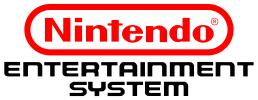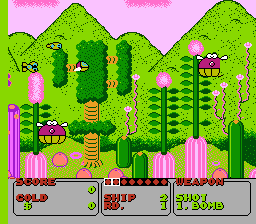Difference between revisions of "Nintendo Entertainment System"
From Sega Retro
m (Text replacement - "Category:Non-Sega consoles" to "{{NonSegaConsoles}}") |
Ccawley2011 (talk | contribs) m |
||
| Line 17: | Line 17: | ||
}} | }} | ||
}} | }} | ||
| − | <section begin=intro />The ''' | + | <section begin=intro />The '''Nintendo Entertainment System''' ('''NES'''), originally released in Japan as the '''Family Computer''' ('''Famicom''') is a video game console originally released in 1983 by [[Nintendo]]. |
The Famicom was Nintendo's first cartridge-based home console, becoming the dominant home video game in Japan during the 1980s. In North America it was redesigned and released in 1985, and is typically credited as reviving the region's video game industry after the North American video game crash of 1983. At 62 million consoles have been sold worldwide, it is widely regarded as one of the most influential video game systems in history. | The Famicom was Nintendo's first cartridge-based home console, becoming the dominant home video game in Japan during the 1980s. In North America it was redesigned and released in 1985, and is typically credited as reviving the region's video game industry after the North American video game crash of 1983. At 62 million consoles have been sold worldwide, it is widely regarded as one of the most influential video game systems in history. | ||
Revision as of 13:20, 30 December 2021

| |||||||||||||
 
| |||||||||||||
| Nintendo Entertainment System | |||||||||||||
|---|---|---|---|---|---|---|---|---|---|---|---|---|---|
| Manufacturer: Nintendo | |||||||||||||
|
The Nintendo Entertainment System (NES), originally released in Japan as the Family Computer (Famicom) is a video game console originally released in 1983 by Nintendo.
The Famicom was Nintendo's first cartridge-based home console, becoming the dominant home video game in Japan during the 1980s. In North America it was redesigned and released in 1985, and is typically credited as reviving the region's video game industry after the North American video game crash of 1983. At 62 million consoles have been sold worldwide, it is widely regarded as one of the most influential video game systems in history.
While different in aesthetics, both the NES and Famicom are identical from a technical perspective, and so on Sega Retro are treated as one system.
The NES was the main rival of the Sega Master System. The NES was succeeded by the Super Nintendo Entertainment System.
Contents
Sega support

It is thought that the existence of the Famicom is the primary reason Sega entered the home video games market in 1983, with the SG-1000 (and successors in the SG-1000 II and Sega Mark III) competing directly with Nintendo's machine during the 1980s. Becoming a major staple of Japanese culture during the decade, the Famicom was a phenomenal success for Nintendo, and those which chose not to work with the company in a third-party, usually found themselves competing with (and subsequently trailing behind) the console.
Despite theoretically working against Nintendo's interests during the decade, Sega licensed a handful of its arcade properties to the likes of Sunsoft, who in turn produced Famicom conversions between 1987 and 1990. Far fewer Famicom games bearing the Sega name were released than on the Mark III (and indeed another rival platform, the PC Engine), with the third-party nature of these releases and the shift weaker hardware usually resulting in a less accurate conversion than those released by Sega themselves.
In North America, where the Sega-Nintendo rivalry would become much more heated in the early 1990s, Sega licensed some arcade games to Tengen (the home division of Atari Games), which in turn published their own conversions to the NES without obtaining an official license from Nintendo in 1989. Tengen's refusal to publish games through "normal" means meant that comparatively fewer copies are thought to have been produced, and were not endorsed or publicised by Nintendo through any official means.
While often working with the same material, Sunsoft and Tengen conversions of Sega games were created independently and only sold in one region. In PAL regions, the NES failed to live up to expectations set elsewhere, and as a result, no Sega games were released for the console outside of Japan and North America.
With the release of the 16-bit Sega Mega Drive from 1988, Sega became far more aggressive in attacking the NES, and with some rare exceptions, would not return to supporting Nintendo consoles in any form until 2001.
List of Sega games for the Family Computer (JP)
- Fantasy Zone (1987)
- Alien Syndrome (1988)
- Fantasy Zone II: The Tears of Opa-Opa (1988)
- Space Harrier (1989)
- After Burner II (1989)
- Juuouki (1990)
List of Sega games for the Nintendo Entertainment System (US)
- After Burner II (1989)
- Alien Syndrome (1989)
- Shinobi (1989)
- Fantasy Zone (1990)
References
| Non-Sega consoles |
|---|
| Nintendo |
| Nintendo Entertainment System (1983) | Game Boy (1989) | Super Nintendo Entertainment System (1990) | Nintendo 64 (1996) | Game Boy Color (1998) | Game Boy Advance (2001) | Nintendo GameCube (2001) | Nintendo DS (2004) | Wii (2006) | Nintendo 3DS (2011) | Wii U (2012) | Nintendo Switch (2017) |
| Sony |
| PlayStation (1994) | PlayStation 2 (2000) | PlayStation Portable (2004) | PlayStation 3 (2006) | PlayStation Vita (2011) | PlayStation 4 (2013) | PlayStation 5 (2020) |
| Microsoft |
| Xbox (2001) | Xbox 360 (2005) | Xbox One (2013) | Xbox Series X (2020) |
| Mobile |
| iOS | Android | Windows Phone |
| Other |
| Atari 2600 (1977) | Intellivision (1979) | ColecoVision (1982) | Atari 5200 (1982) | PC Engine (1987) | CD-ROM² (1988) | Super CD-ROM² (1991) | R-Zone (1995) | Game.com (1997) | WonderSwan (1999) | Neo Geo Pocket Color (1999) | N-Gage (2003) | LeapFrog Didj (2008) | Stadia (2019) |